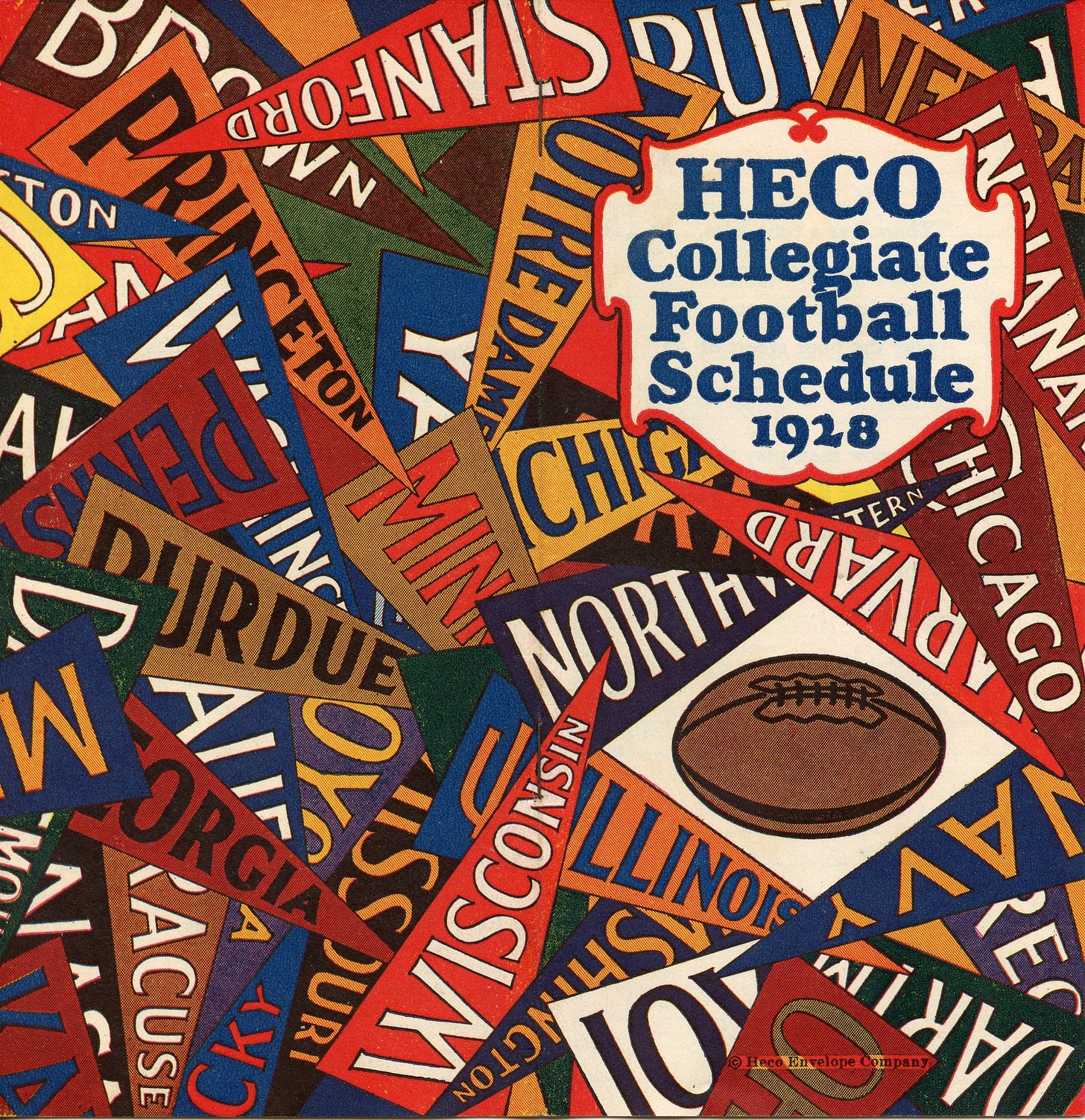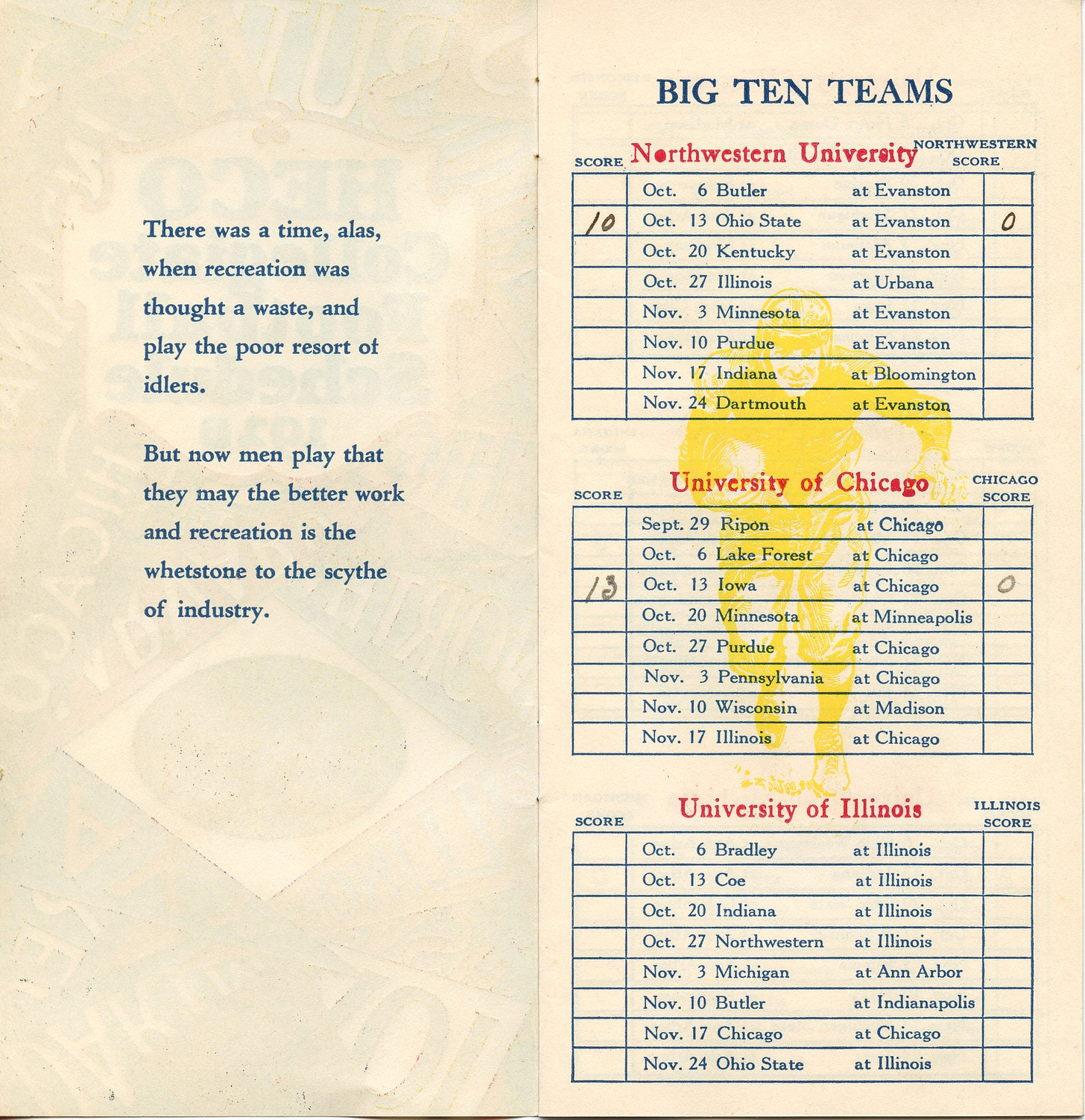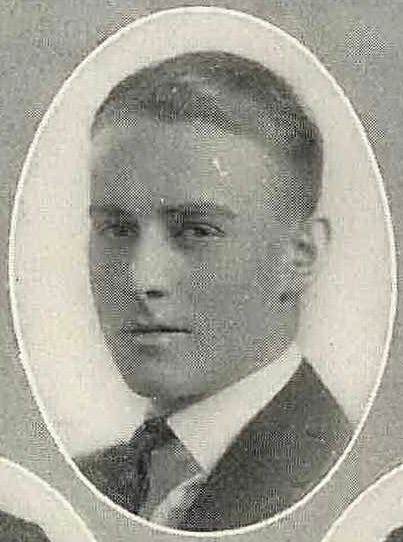Today's Tidbit... HECO Envelope and the 1919 Rose Bowl
As regular readers know, I collect old composite football schedules. Since most of the schedules are pocket-sized, they often include essential information in condensed lists and articles on recent seasons, offering frozen-in-time insight into perceptions of the game at the time.
The pursuit of these schedules recently brought me a 1928 schedule published by the HECO Envelope Company of Chicago. As an early example, it displays a few quotes and the season schedules for 36 teams. It does not include the typical information on the previous season's results or All-American teams that I find so appealing.

Instead, the booklet shows only the schedules for college football royalty with a dash of Midwestern flavor. Northwestern, Chicago, and Illinois came first, followed by the rest of the Big Ten.
Eastern teams like the Ivies, Army, Navy, Pitt, Syracuse, Washington & Jefferson, and Georgia Tech were next. Then came a few more Midwestern teams before closing out with four from the Pacific Coast: Stanford, Cal, USC, and Washington.
The primary attractions of this schedule for me were its cover and a recollection that one of the 1918 Great Lakes football team players had worked at HECO after WWI. (I profiled the players' before, during, and after lives on the 1918 and 1919 Rose Bowls in Fields of Friendly Strife.)
After reviewing my notes, that player turned out to be Bernard H. “B.H.” Miller. Miller was a star athlete growing up in Bridgewater, Illinois. After graduating from high school in 1918, he entered the Navy and was assigned to the Great Lakes Naval Training Station north of Chicago. He was among the 500-plus players to try out for the Great Lakes football team and was one of fifty to make the roster, fourteen of whom played in the NFL after leaving the service.
During the 1918 season, Miller started one game at right tackle versus Purdue and was on the 1918 Rose Bowl roster, though he did not play in the game. Like several others on the team, he followed his Great Lakes teammate, Charlies Bachman, to Northwestern after Bachman was named Northwestern's coach.
Miller started as a freshman but did not play his sophomore year after being named the class vice president. He then dropped out of school and joined the HECO Envelope Company as a salesman, which connects him to the composite schedule that started this story.
Miller became the company president after he and two other employees purchased the company in 1929, so Miller's football background may have played a role in HECO publishing the 1928 composite schedule. An eBay search showed that HECO produced a similar composite schedule in 1936 and a Chicago White Sox schedule in 1968, so they likely printed other sports schedules over the years.
HECO grew from 50 to 250 employees during Miller's time there and was a going concern in the 1960s when he retired. The company appears to have been acquired at some point thereafter and is no longer an independent business.
Football Archaeology is reader-supported. Click here to buy one of my books or otherwise support the site.



